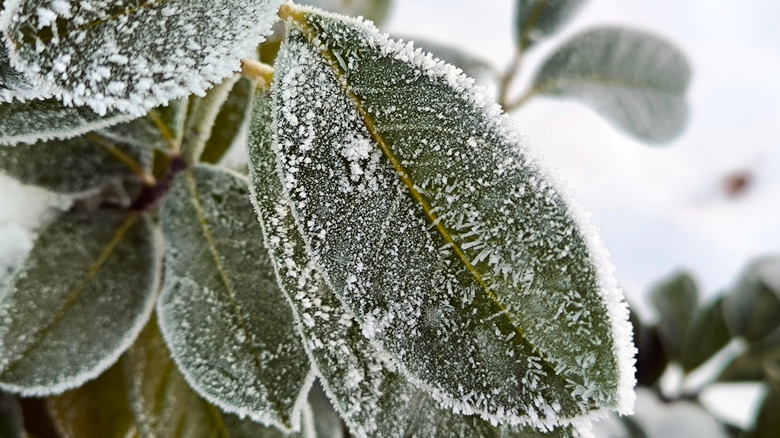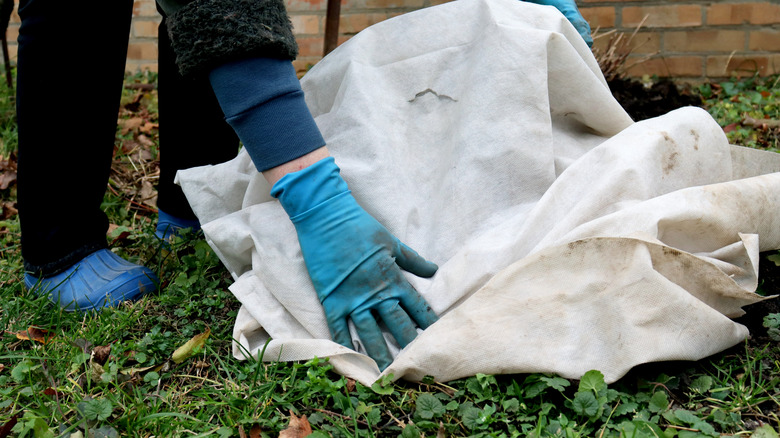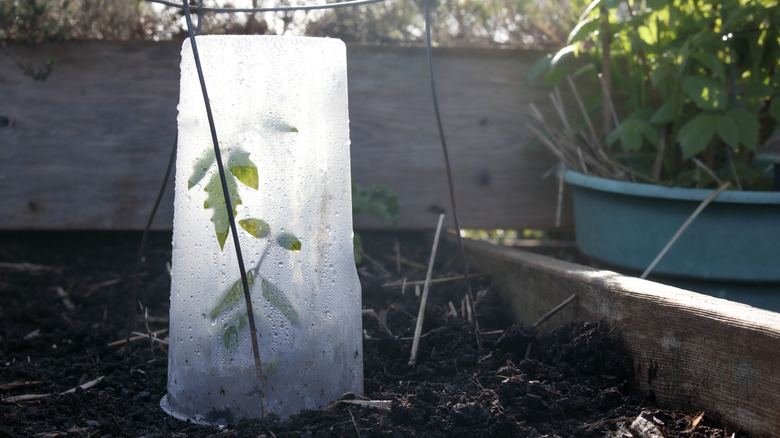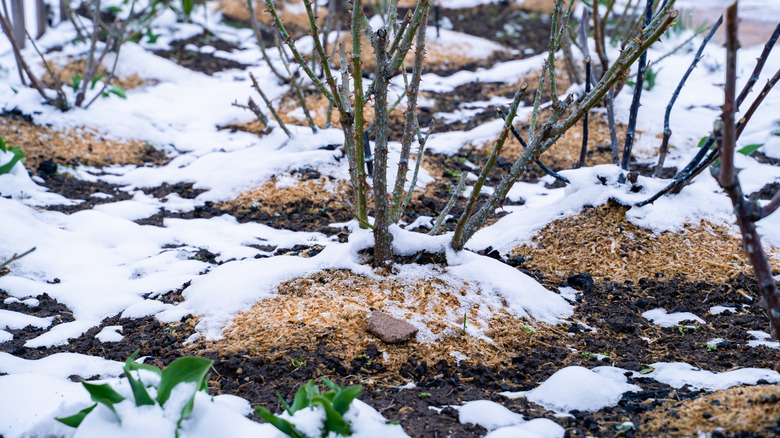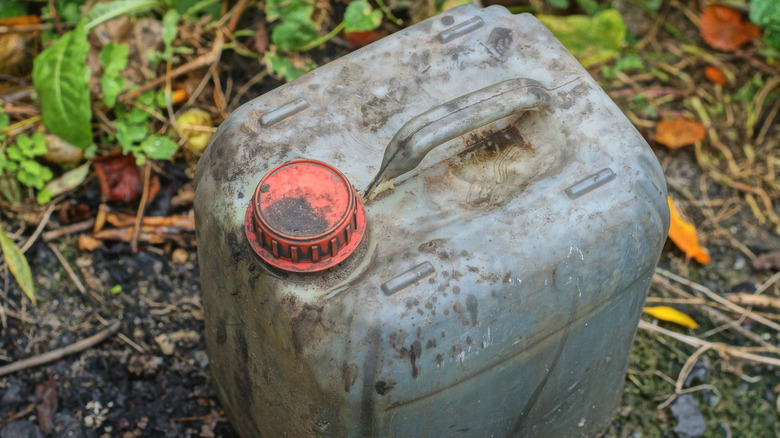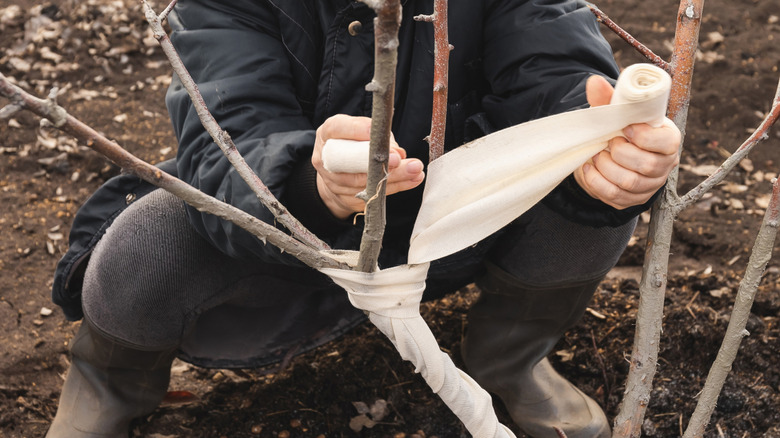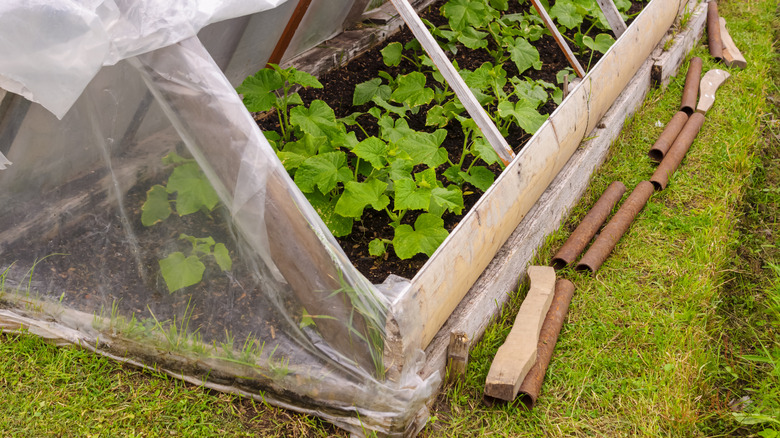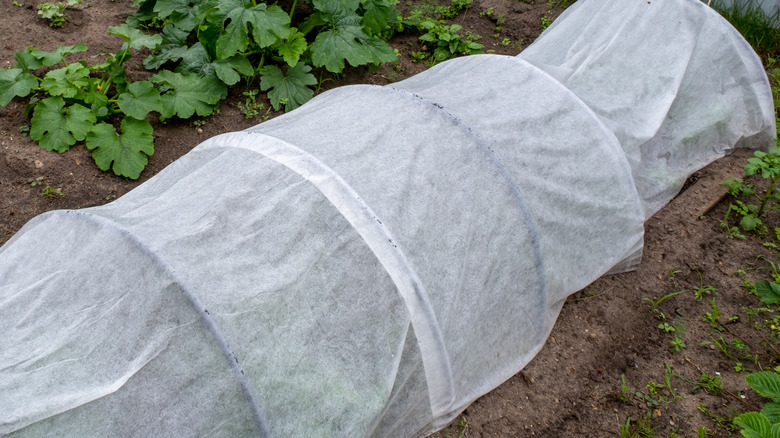7 Clever DIY Ideas That'll Protect Your Plants From Frost
If you're looking for tips for protecting your plants from frost this season, you've come to the right place. And the best part is, you can build these protections yourself without wasting any money. There are several reasons you may want to protect your plants from frost. In some cases, you may want to keep them from dying off before a late fall harvest. In warmer climates, you may need to cover plants to keep them from freezing during low overnight temperatures in winter. Or, for cold-hardy perennials, you could cover them to help them recover faster in the spring. Whatever the reason, it is important to note that DIY fabric covers will only protect your plants down to about 24 degrees Fahrenheit, which is enough for most of these options. If you need something with more protection, you can build a cold frame or use garden hoops, but make sure you really need it so you don't damage your plants.
The following DIY ideas are tried-and-true ways to protect your plants from frost, used for generations and studied by universities and gardening authorities alike. Most people are already familiar with covering their plants with old sheets, blankets, or other loose fabric they have lying around. But that's not the only method that works; these seven DIY frost protection ideas will keep your plants safe and sound through cold nights. Whatever you do, however, avoid gardening hacks that won't actually protect your plants from frost, like plastic sheet covers.
Reuse old fabric to make cloth covers
Cloth covers are a great way to protect plants from frost, but they won't prevent damage from a hard freeze. Using old fabric–from sheets or blankets–and a simple frame, you can keep your plants from falling victim to an early freeze. The fabric traps heat around plants at night, but you must uncover the plants during the day to promote air circulation and let in sunlight. You don't want it to touch the plant, so add wood or PVC poles in the ground and secure the fabric with bricks or rocks.
Flip plastic containers upsidedown for temporary protection
While it's true you want to avoid using sheets of plastic to cover your plants, you can flip plastic tubs upside down to protect them overnight. However, you will want to make sure you uncover them during the day. This method is only suitable for late fall or early winter, not for overwintering when there will be hard freezes. Most commonly, it's an easy solution for protecting container plants before it's time to bring them inside for the season. Just make sure to secure them with something heavy so they don't blow away.
Naturally control soil temp with homemade mulch
Believe it or not, hydrating your plants can help protect them from frost and ensure perennials make it through the winter. By adding mulch to plants that need it in the winter, you can provide an extra layer of protection, helping retain moisture near the roots and moderating soil temperatures. With the right ingredients, you can make your own DIY mulch that fits your garden's needs. For overwintering, wait until the first hard frost to mulch; for low plants, you can cover them with straw to protect them from a light frost.
Paint plastic jugs black for nighttime heat transfer
Hydrating your plants helps protect them from frost because moisture in the soil holds heat better, preventing the roots from getting damaged, and it also helps with heat transfer at night. This is also true with water above the ground, which can absorb heat during the day and release it into the soil at night. A simple trick to make this heat transfer work for you is to paint milk jugs (or other recycled containers) black, fill them with water, and place them in your garden.
Save old Ace bandages (or other cloth) for your tree trunks
For trees that are between 1 and 4 years old, you will want to wrap the tree trunks with some kind of protection to prevent damage from frost in the winter. You can use any kind of cloth strips or burlap, but old Ace bandages work particularly well because they are easy to wrap and insulated enough to provide quality protection. Wrap trees when nighttime temperatures reach below 36 degrees Fahrenheit.
Build a custom cold frame
If you need to protect your plants from harsher temperatures, you may want to try cold frame gardening. Building a DIY cold frame ensures it is the correct size, creating the best conditions for your plants. A cold frame is essentially a miniature greenhouse that completely covers the plants at night inside a wooden frame with glass or plastic "windows." The most important thing to remember is that your plants still need air and sunlight during the day, so the windows need to open.
Use garden hoops to make garden tunnels
Instead of putting poles in the ground, you can install garden hoops over your plants using PVC pipes or store-bought hoops. Hoops create a simple frame to keep a cloth covering from touching your plants. But hoops can also be used to create garden tunnels using plastic for the winter. You may have seen these if you've driven through the countryside in a colder region. If you use plastic, it is essential that you open the tunnel every day.
